Abe Monjuin: An ancient temple with a connection to stars and astrology…and National Treasures
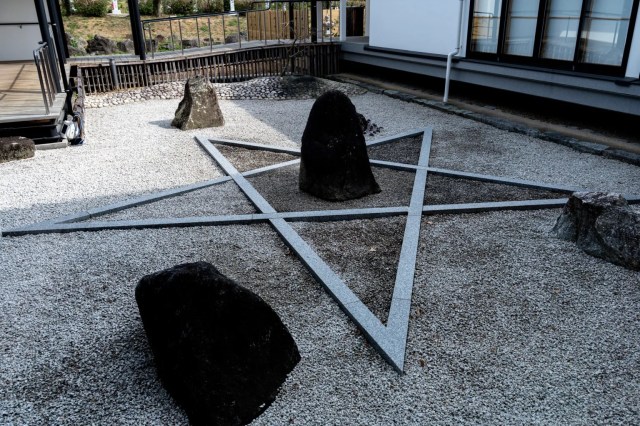
A stop on the Nara Yamato Four-Temple Pilgrimage leads to a jaw-dropping discovery.
If you’d like to escape the crowds and immerse yourself in the traditional history of Japan, the Nara Yamato Four-Temple Pilgrimage in Nara Prefecture is a trip you’ll definitely want to add to the itinerary.
Our reporter Egawa Tasuku has been stopping by the famous temples on the pilgrimage, as part of a press tour conducted by Japan Central Railway Company (JR Tokai), and after visiting Hasedera and Murouji, he was shown around a third temple, Abe Monjuin, for the very first time.
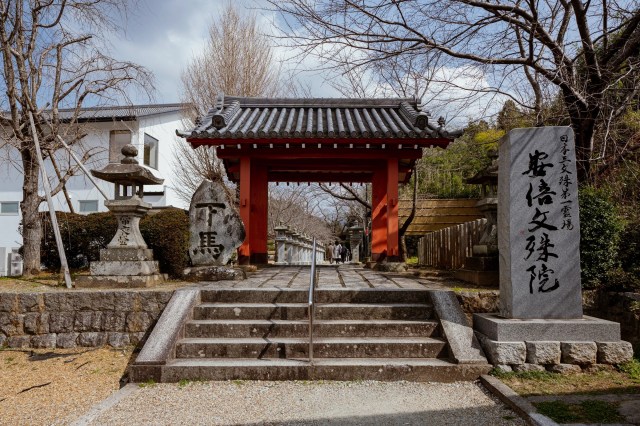
The name of this temple is connected to Abe Seimei, an onmyoji (diviner) who was born in Nara and lived from 921-1005. Abe Seimei is a hugely popular historical figure who provided spiritual advice and predictions to emperors and the government of the Heian Period (794-1185 CE), and his connection to astrology and the mystical world has led him to remain popular to this day, with his character being depicted in movies, TV shows, manga, anime and even video games.
Over in Kyoto, the Abe no Seimei Shrine is famously dedicated to Abe Seimei, but the Abe clan was influential long before that shrine was constructed in 1007. Abe Monjuin Temple was founded in 645, making it the original sacred site connected to the family, and as one of the oldest Buddhist temples in Japan, it’s an amazing place to visit.
Those who want to visit in style can pick up one of 1,000 free pilgrimage robes when purchasing a goshuin (red ink stamp) for 300 yen (US$1.91) at one of the four temples.
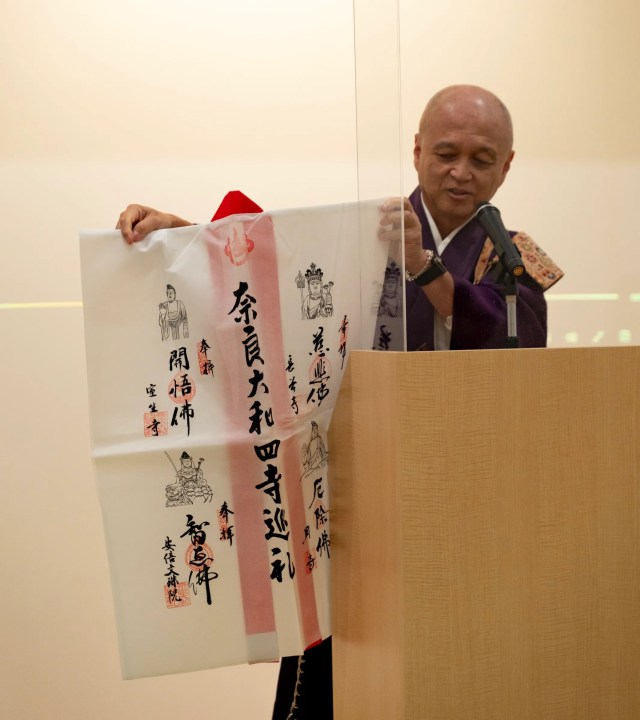
Goshuin are usually stamped in goshuincho, special plain-page books, and as part of JR Tokai’s “Izaiza Nara” promotional campaign to attract visitors to the area, which runs until 30 June, they’re selling exclusive ones with an embroidered cover featuring a deer, for 2,500 yen.
▼ Reservations for the goshuincho must be made here, by 2 p.m. the day before pickup at the Nara Tsutaya bookstore.
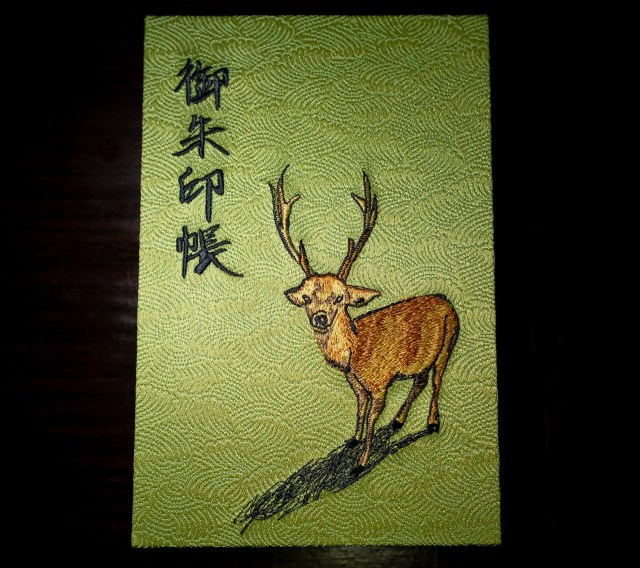
Abe Monjuin has a number of historic sites on its grounds, which are outlined in this map of the precincts.
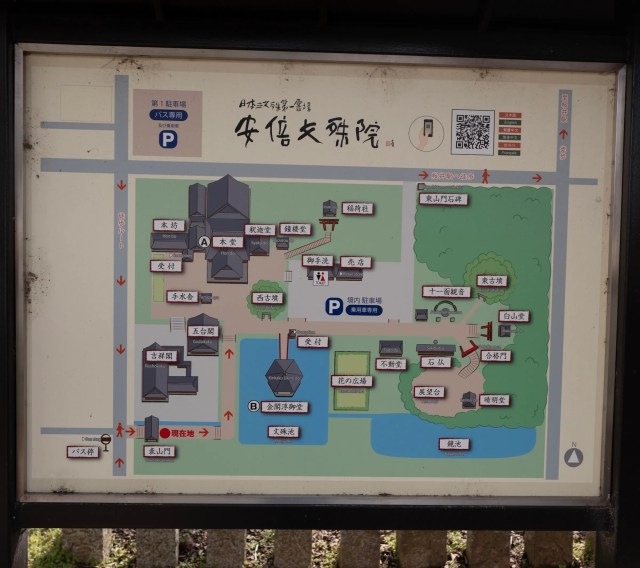
It’s a spacious setup, with the main hall located quite a distance from the main gate.
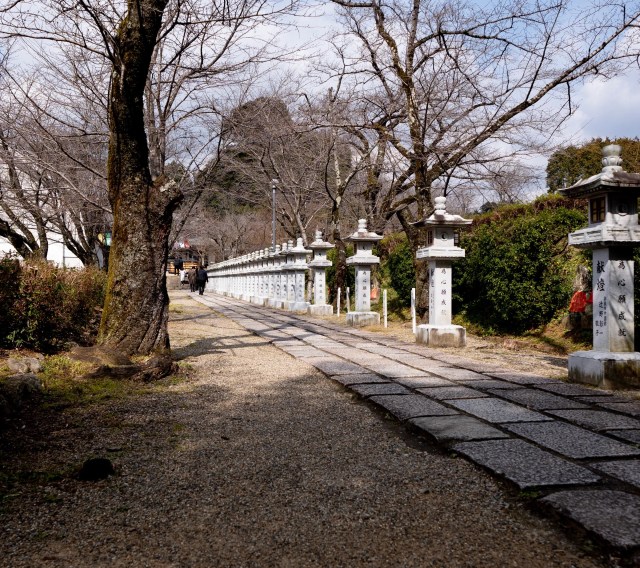
The main hall is resplendent in colour, with strips of material representing the Japanese version of the International Buddhist flag fluttering under the eaves.
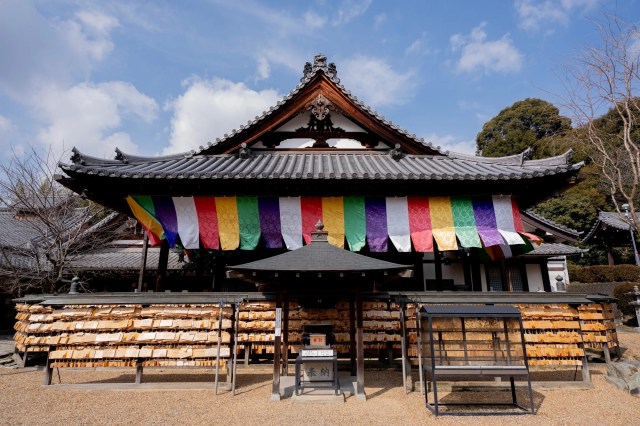
This hall houses an incredibly important National Treasure that’s usually off-limits to photographers, but Egawa was able to photograph it as a member of the press. Known as the Tokai Monju, this wooden figure depicts Monju Bosatsu, the wisest of the Bodhisattva, who is the principal image of the temple, riding a lion, with two attendants on either side — Yuma Koji and Subodai on the left, and Yujo-o holding the reins of the lion on the right, with Zenzai Doji, also on the right, leading the way.
▼ Built by Kaikei, a Buddhist master, in 1203, all five statues are designated National Treasures.
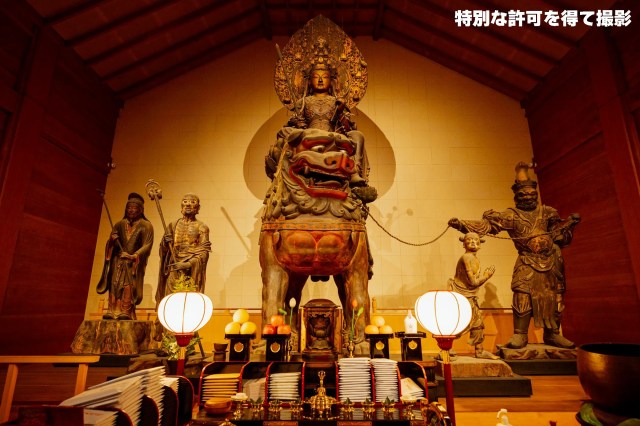
The jaw-dropping display represents a journey to expel the demons of us sentient beings and provide wisdom, so a lot of the pilgrims who visit here pray for wisdom. The connection to Abe Seimei also lends itself as a spiritual place to ward off evil and disaster.
While the wooden figures here are amazing to look at, they’re also incredibly made. According to the monk who was guiding Egawa around the grounds, the Monju Bosatsu and the lion aren’t attached, as the figure was simply placed atop the lion when it was created. With the combined figure standing at over seven metres in height, it’s incredible to think that it hasn’t toppled over once, in spite of the country’s many earthquakes over the centuries.
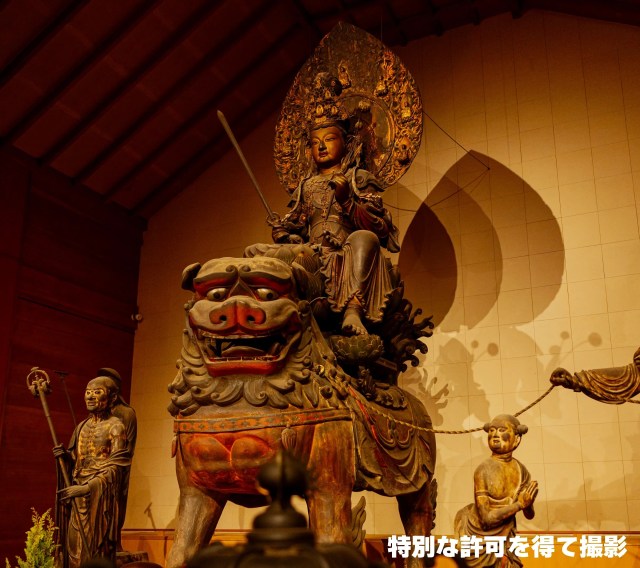
This rock-hard construction is a testament to the creator’s skill, and Egawa found himself gazing at it for ages, admiring every inch of its elaborate beauty. The temple isn’t taking any chances with the future of its Natural Treasures, though, as a seismic isolation device is scheduled to be installed on the Main Hall, to prevent the building from collapsing in an earthquake, with works beginning in June.
During this period, it won’t be possible to visit the main hall as usual, which means the National Treasures inside will also be off-limits, so now’s the time to visit if you want to to see the amazing display in person.
There are other fascinating sites to see, though, including Kinkaku Ukimido Reihokan, which houses a statue of Benzaiten and a statue of Abe Seimei.
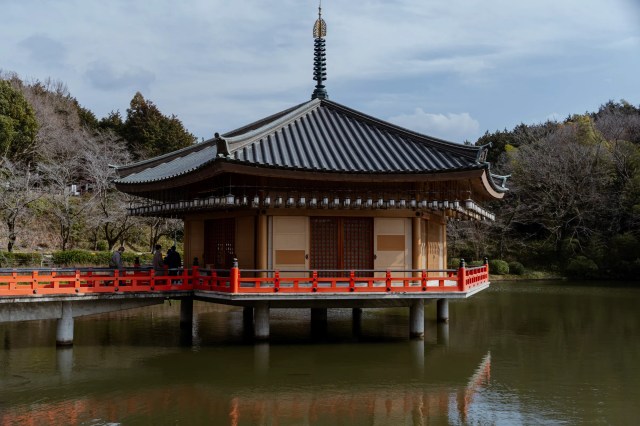
And the Monjuin Nishi-kofun, an ancient tomb that dates back to the 7th Century, which has been designated a Special Historic Site by the government.
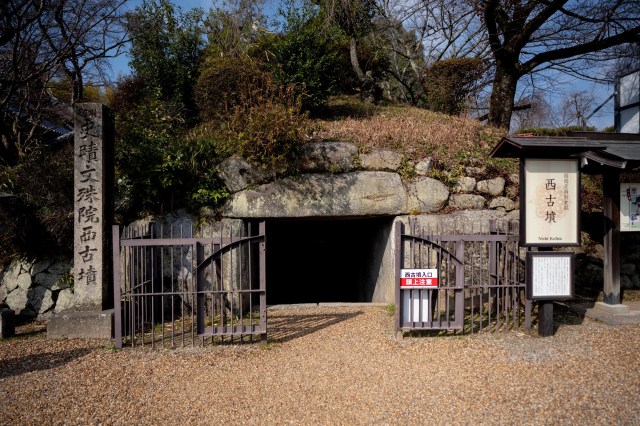
Visitors can enter this ancient tomb, which is preserved as it was in 645, when it was created to be the grave of Abe Kurakaimaro, the founder of Abe Monjuin. This magnificent feat of construction features a single-stone arched ceiling, and a “Gankake Fudo” (“Wishing Immovable Lord”), which is said to have been crafted by Buddhist monk Kobo Daishi (774-835).
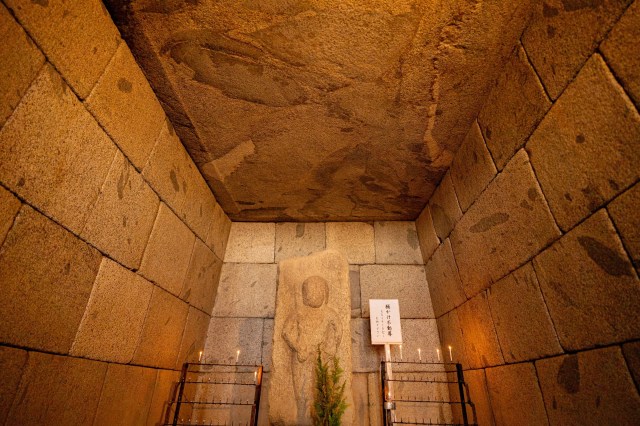
This side-hole type stone chamber has not been excavated and it is extremely sturdy, made of stones that have been processed and laid out using amazing craftsmanship techniques. It’s an overwhelming experience to stand upon such ancient sacred ground, and it’s just one of a number of impressive sites at the temple, which is also home to the ruins of an observatory where Abe Seimei was said to have made astronomical observations.
A visit to Abe Monjuin will definitely be one to remember, so next time you’re in Nara, be sure to check it out, and if you can squeeze in a visit to Hasedera and Murouji, even better!
Temple information
Abe Monjuin / 安倍文殊院
Address: Nara-ken, Sakurai-shi, Abe 645
桜井市阿部645
Website
Related: Izaiza Nara, Nara Yamato Four-Temple Pilgrimage
Photos © SoraNews24
● Want to hear about SoraNews24’s latest articles as soon as they’re published? Follow us on Facebook and Twitter!
Credit:

0 comments:
Post a Comment